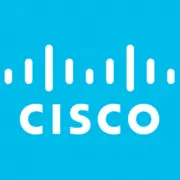The most reliable, powerful and flexible Wireless Controller on the market
Overall Satisfaction with Cisco Wireless LAN Controllers
Cisco Wireless LAN Controllers are being used since 9 years ago, when we moved from a small deployment of 20 or so access-points being controlled by 1 single master AP, autonomous AP architecture to a new approach called LWAPP architecture, where the Wireless LAN controller manages and controls all the AP in the campus. For us, it meant we had a huge leap in administration and allowed us to increase the adoption of the WiFi technology, going from 20 to 300 AP along the last 9 years, using the same controller. Besides that, we could improve availability having 2 controllers working simultaneously. Last, but not least, we could serve several remote offices with the same controllers, hosted in our HQ.
Pros
- Centralized configuration and management is something that Cisco Wireless LAN Controllers does very well. You just need to do the basic setup and once you connect a new AP to the network, it seeks the controller, downloads the most updated firmware, configuration and that's it. For big deployments, it means a lot of work hours saved and deployment time reduced.
- As we see in several Cisco products, it's no different in this case. Cisco Wireless LAN Controllers are so robust and stable that you almost forget they exist in your infrastructure. They are designed to support thousands of users, hundreds of access-points. Its software is always evolving also. We started, 9 years ago, with a software version that was updated several times, always adding new features and technologies like fast roaming, for example, running in the exact same hardware from 9 years ago.
- The same Wireless LAN controller can be used for multiple kinds of deployments, because the hardware is so powerful and the software is so flexible that you can deploy enterprise networks and guest networks at the same time, thanks to segmentation, multiple network interfaces, captive portal, etc.
Cons
- There was one missing functionality that was very important: the ability to update the software without having to reboot the controller. Luckily, since the recent launch of the Catalyst 9800 series, it was solved.
- The management interface, at least for old models, didn't receive and update since it was launched, so we miss some of the new interface elements we see in other products. It was also addressed in later hardware launches, but for old models, it's still a small fault.
- Depending on the size of your deployment, you may think that the cost of the Cisco Wireless LAN Controllers can be a little high. Just keep in mind that the equipment will survive for a long time, so if you had a chance to invest in this, I think it worth the money.
- Considering we invested in a pair of Cisco Wireless LAN Controllers 9 years ago and we're still relying on them to support a 400 AP deployment, I can say it was one of the best ROI equipment we ever bought. Its reliability is phenomenal and worth every penny you spend.
- As described before, you can start with a small model and once your deployment grows, you can replace for a bigger model, protecting all the investment in AP and even in the configuration. The configuration of the controller is exactly the same, so it's very easy to migrate.
- If you have small deployments, you can take vantage of the virtual appliance, which has the same features of the hardware version, but costs a lot less and doesn't require too much hardware resources. In our case, we're running a virtual appliance inside an ISR4K/UCSe along with other software, like a firewall. The ROI, in this case, can be achieved quickly because you can consolidate a lot of software features in the same box.
- Aruba Networks Wireless LAN (WLAN)
Although Aruba has also a great set of hardware and software products, we already had a big Cisco investment in access-points that would only work with Cisco Wireless LAN controllers, so it was a natural path. We have also a big Cisco switching platform that works very well with Cisco wireless platform. The number of partners available for Cisco Wireless platform is also a key decision point.



Comments
Please log in to join the conversation